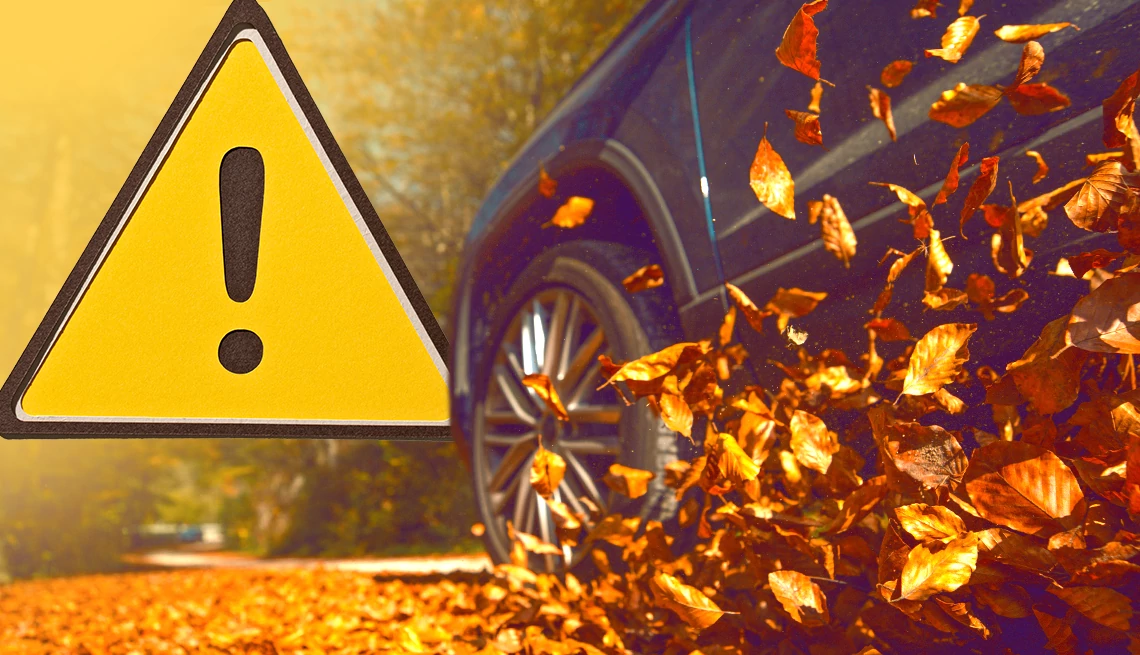AARP Hearing Center


Autumn’s arrival cues — weather changes, shifting wildlife behavior, shorter days, the start of school and falling leaves — can all impact cars and drivers. “The driving environment can change a fair bit when seasons change,” says William Van Tassel, manager of driver training programs for the American Automobile Association (AAA).
This is especially important for drivers 50+, who are more likely to drive an older vehicle that lacks advanced driver assistance systems, says Aimee Cox, a research scientist at the Insurance Institute for Highway Safety (IIHS) who specializes in mature drivers.
So while you sip your pumpkin spice latte and daydream about Thanksgiving dinner this fall, read up on what to know before you head out on the road.
Beautiful fall leaves mean slick patches on the road
The lovely foliage that trees shed in autumn can cause issues. Leaves’ waxy surface prevents water absorption, according to Van Tassel, making fallen leaves slick. “Consider leaves on the road like patches of ice,” he says. He recommends avoiding them if it’s safe. Otherwise, he says, to best maintain stability, “handle your braking before you get to those patches, instead of as you’re driving over them.”
Cold weather takes away your tire traction
AARP Smart Driver™ course
Learn safe driving strategies and you could earn a discount on auto insurance. Find a location.
According to Van Tassel, because of chemical properties in their rubber formulas, tire traction diminishes in colder temperatures. He recommends driving “a bit smoother,” trying to avoid abrupt movements or sudden turns, to make up for this change.
AAA has additional advice for tire maintenance. Make sure that your tires are inflated to the air pressure suggested in your owners’ manual — these numbers are often also printed on the inside of the driver’s doorjamb. And check that your tires have plenty of tread. Put a quarter coin in the tread with the top of Washington’s head facing down; if you can see the hair on the top of George’s head, it’s probably time to replace the tire.
Shorter days mean less daylight driving
“Older drivers are more susceptible to vision [issues],” during the transitions between light and dark, Cox says, emphasizing the importance of illumination-enhancing technologies. If your car has high beam assist, Cox recommends using it. The feature automatically turns your high beams on and off when approaching and departing darker areas. Another good feature to have: curve-adaptive headlights, the beams of which move with the steering wheel to increase visibility.
































































More From AARP
7 Car Smells You Should Never Ignore
From rotten eggs to maple syrup, an odd odor usually means your vehicle needs fixing — and could even be dangerousConvincing a Loved One to Give Up Car Keys
What to do when it’s no longer safe for a family member to driveAARP Smart Guide to Electric Cars
Which vehicle to choose, tips to properly charge it, how to get incentives and moreRecommended for You